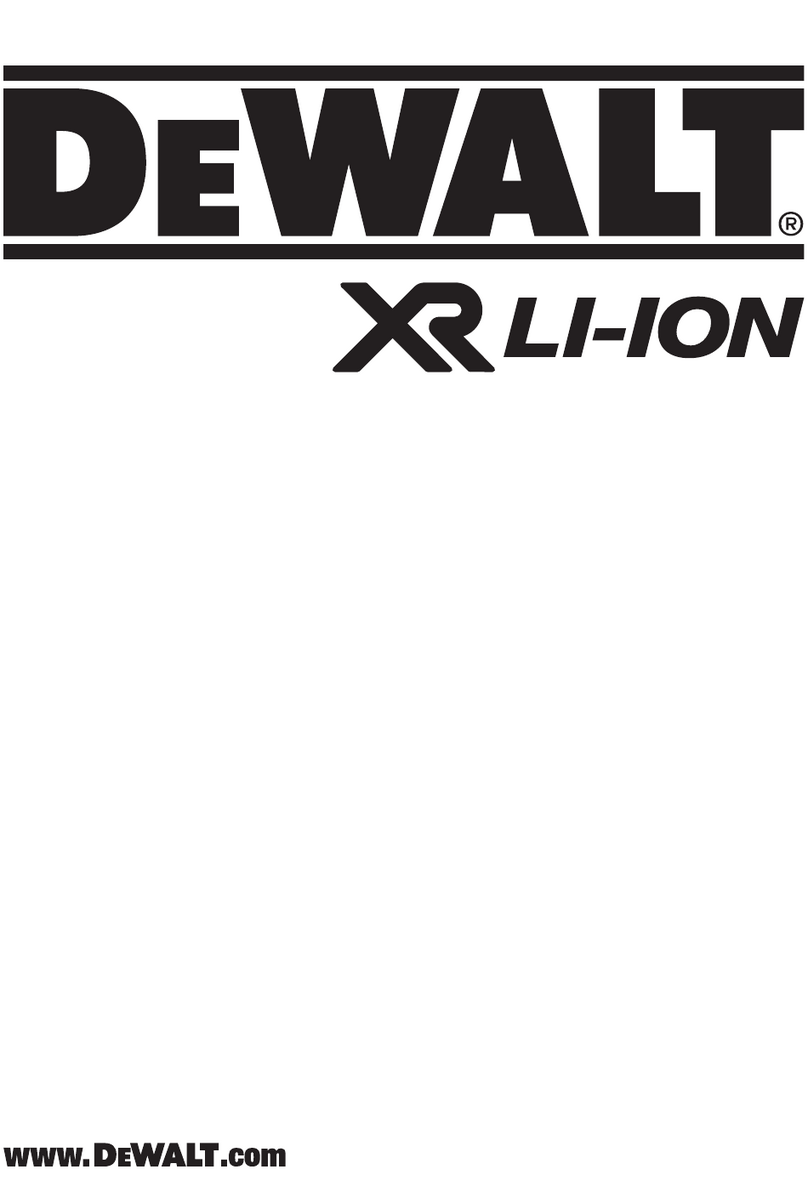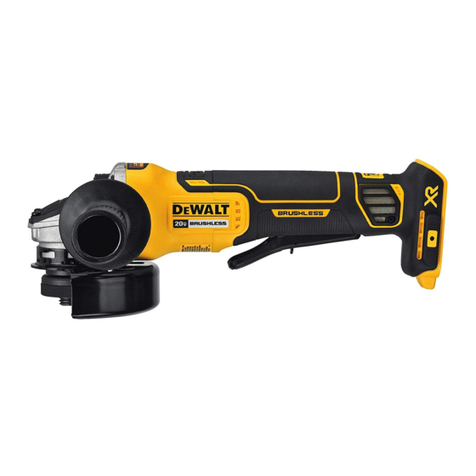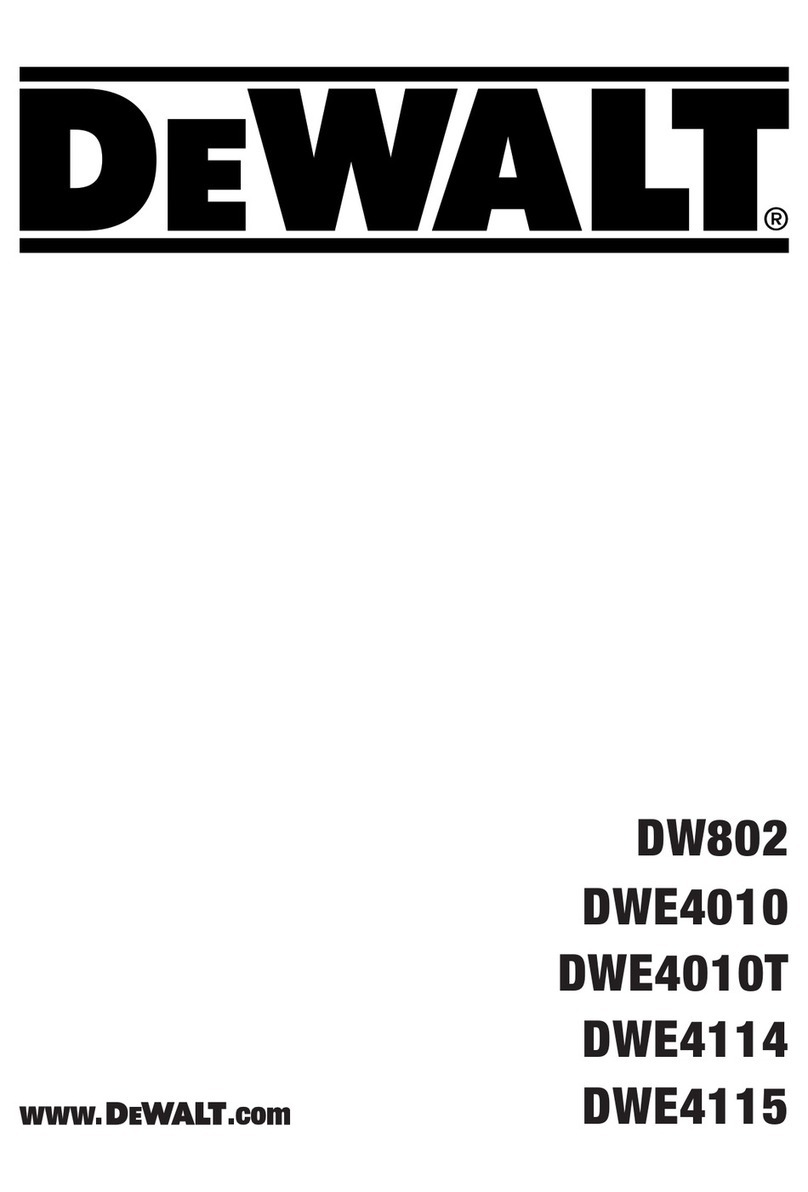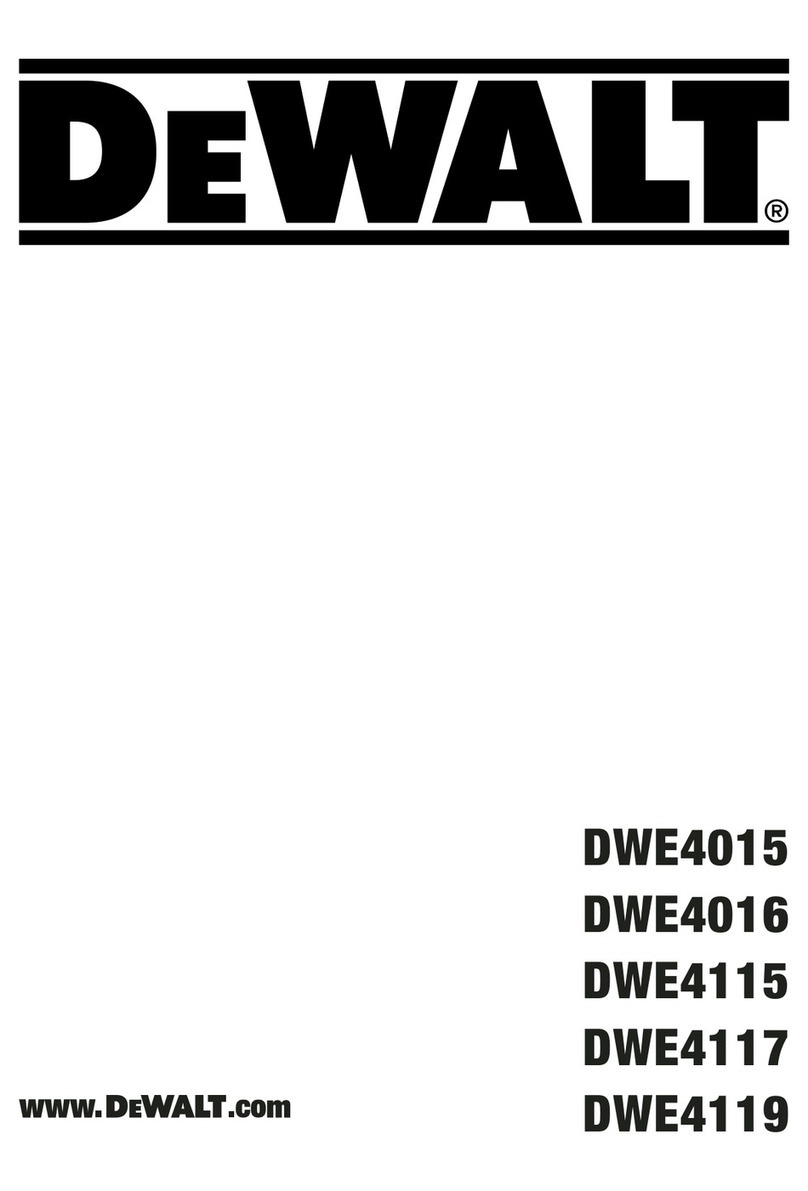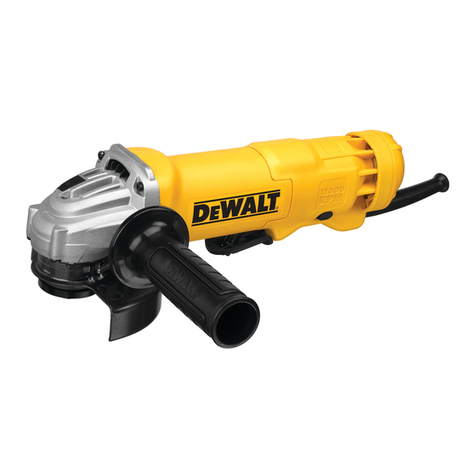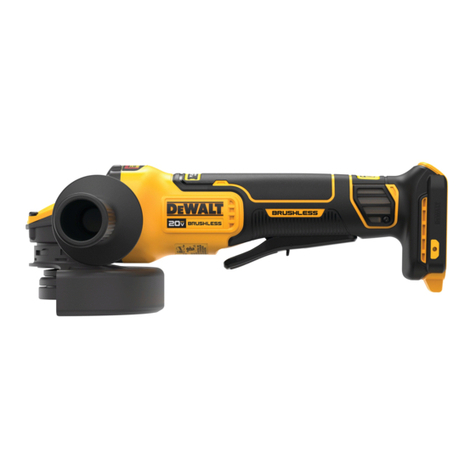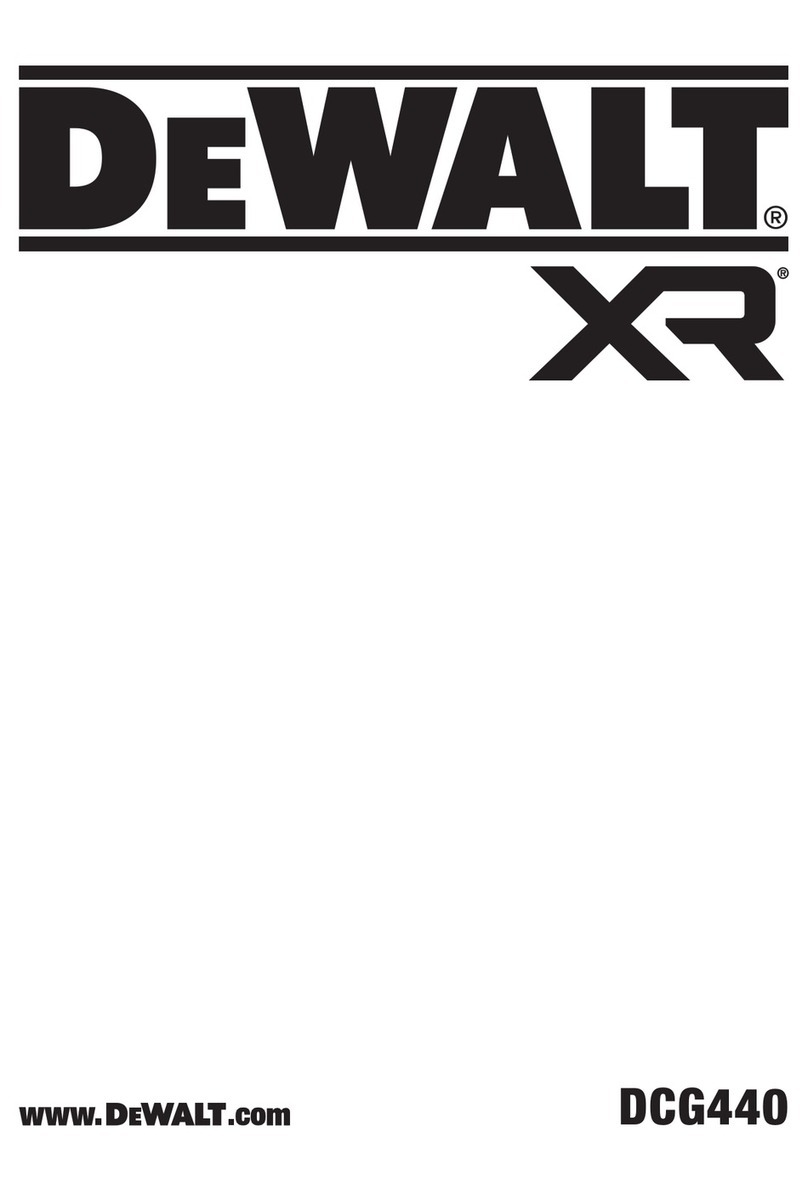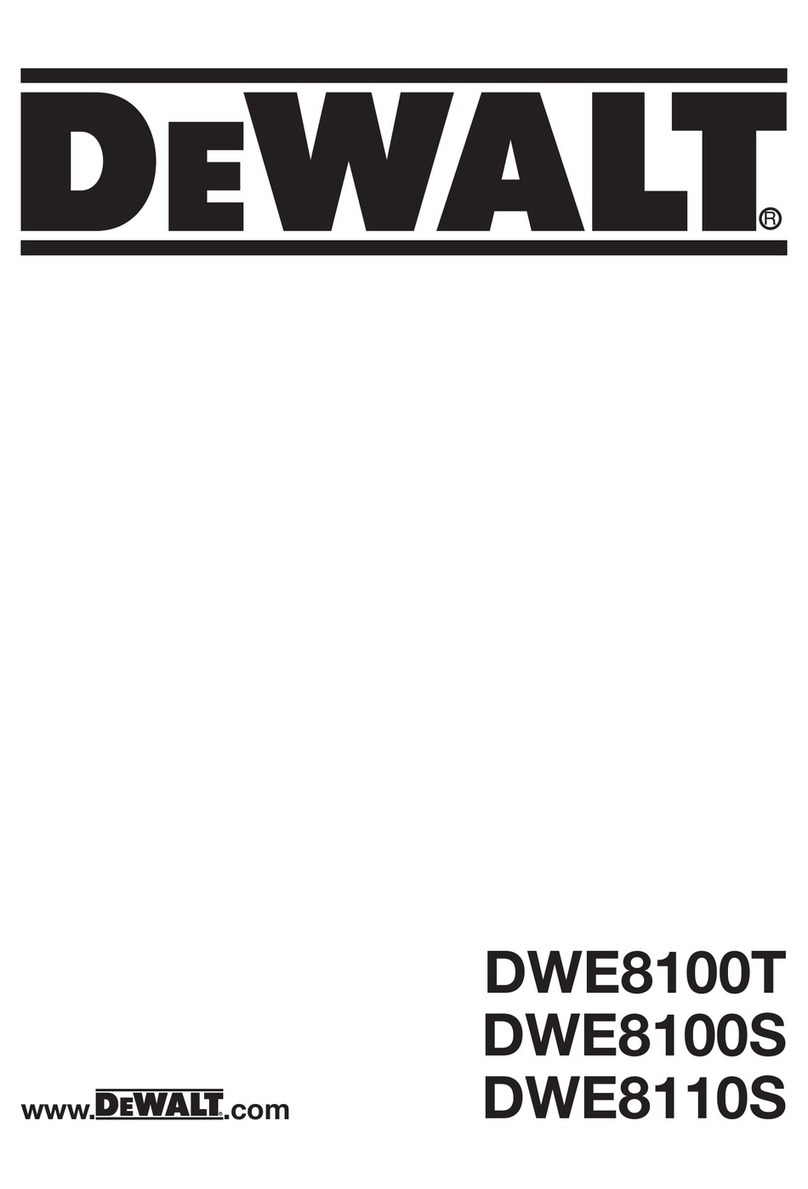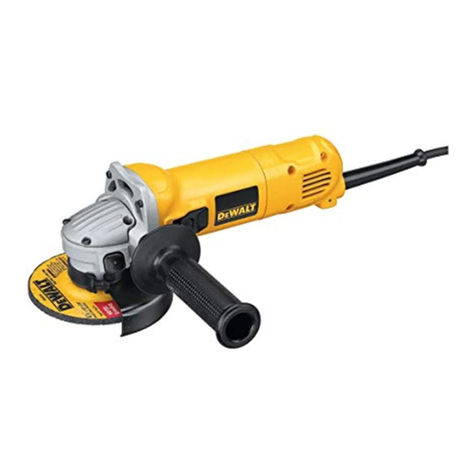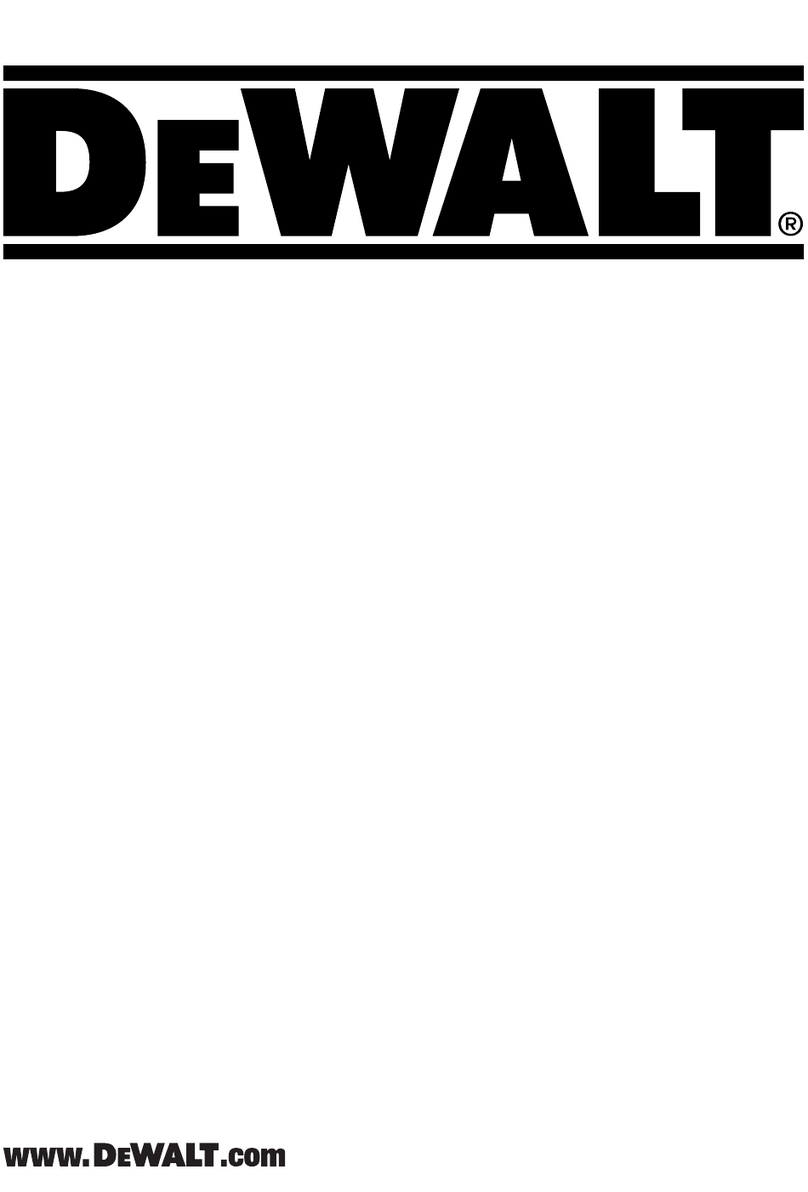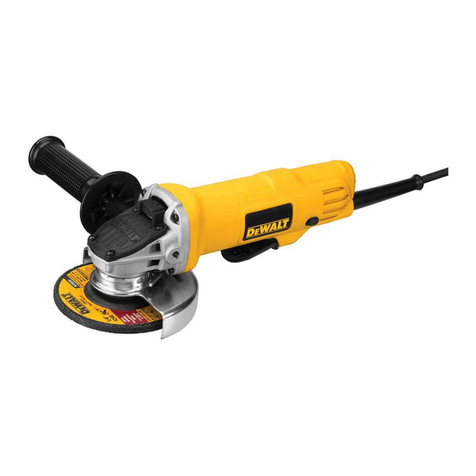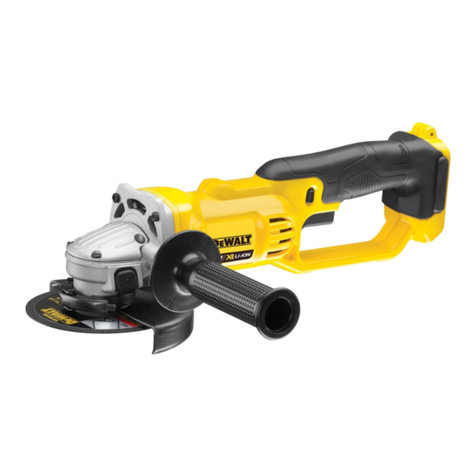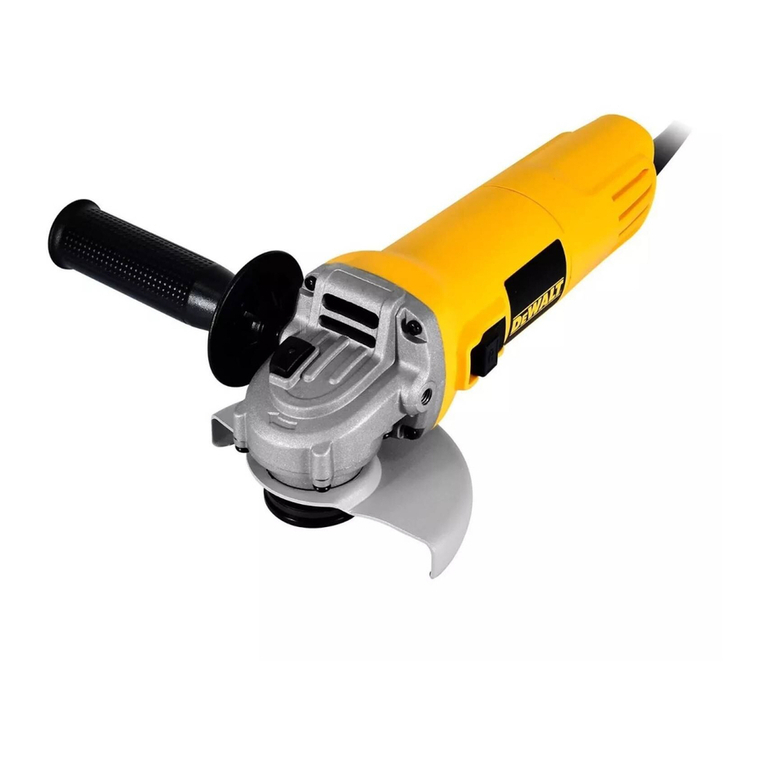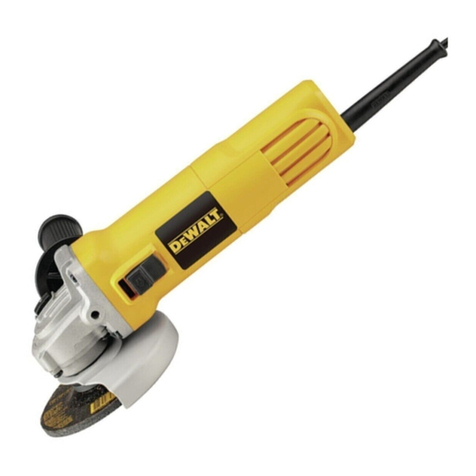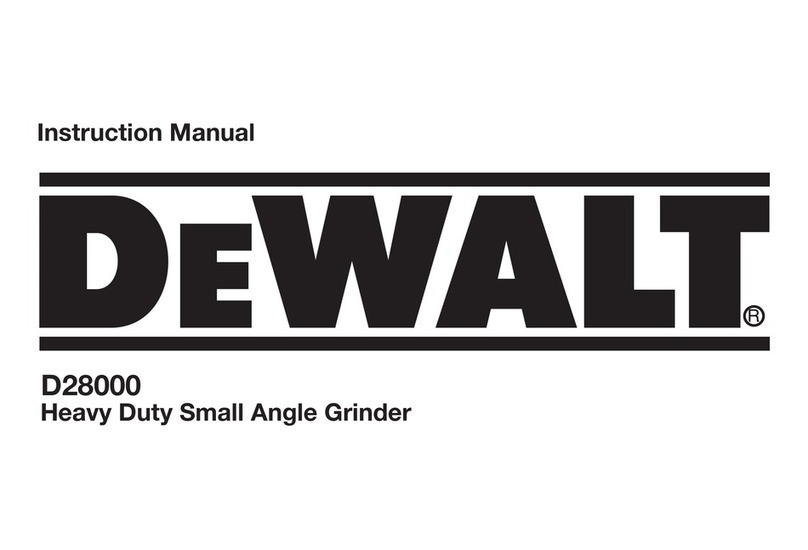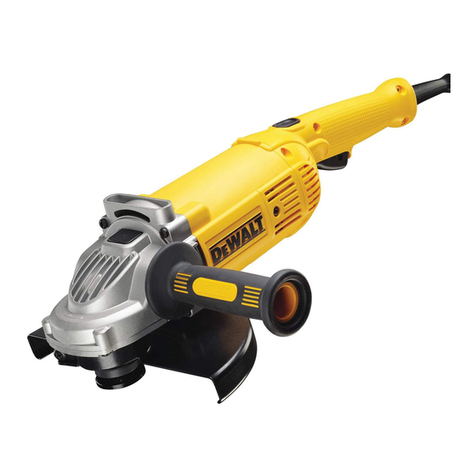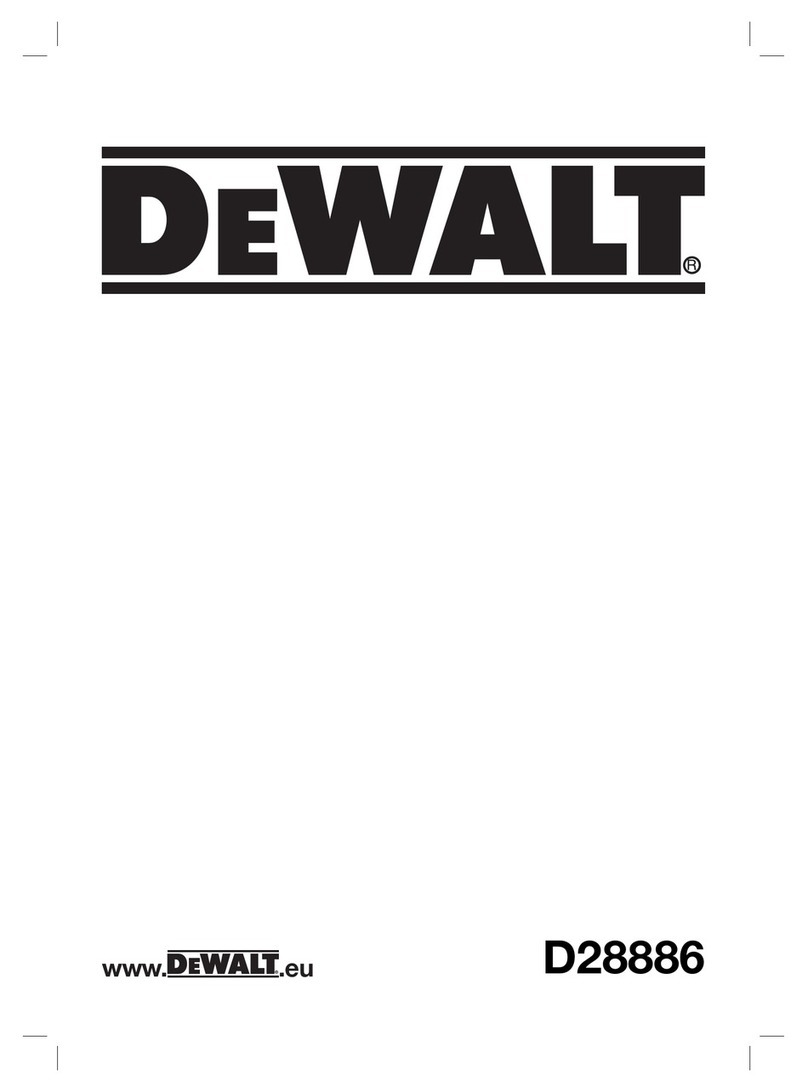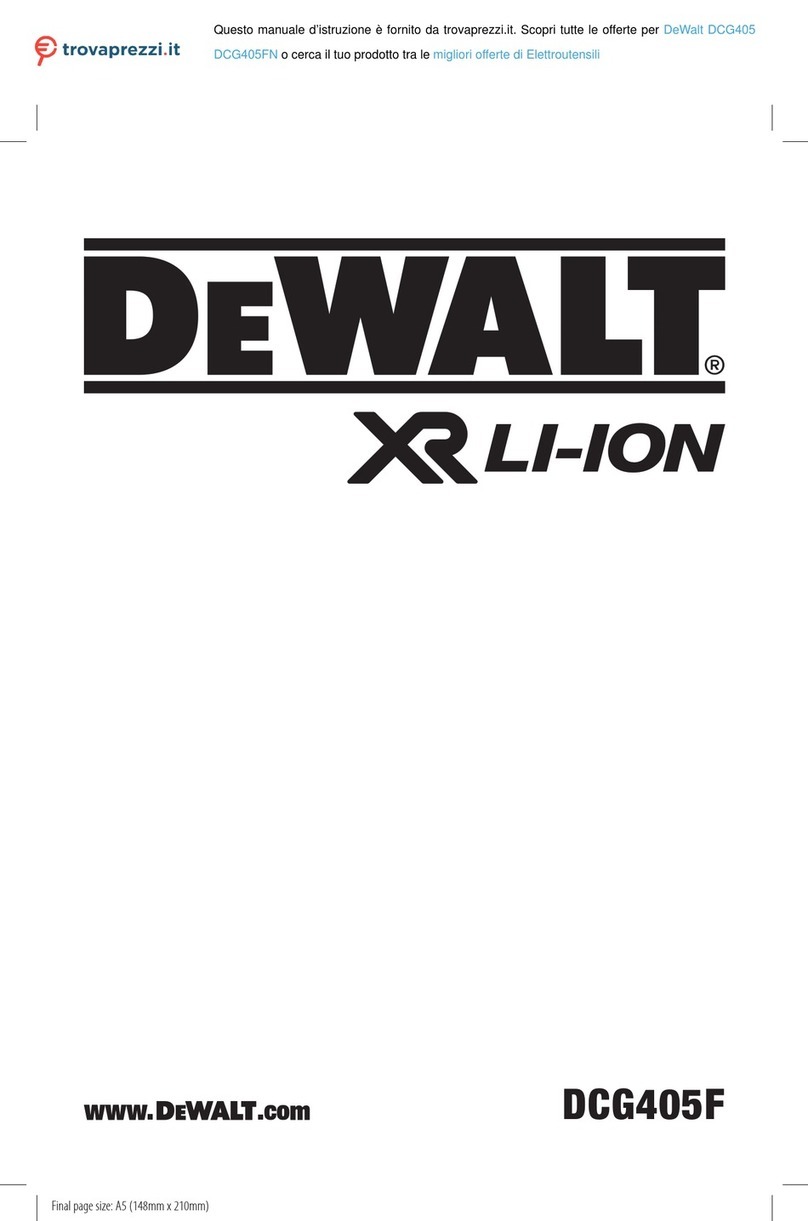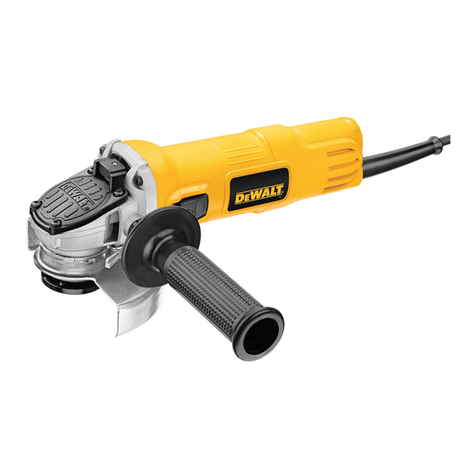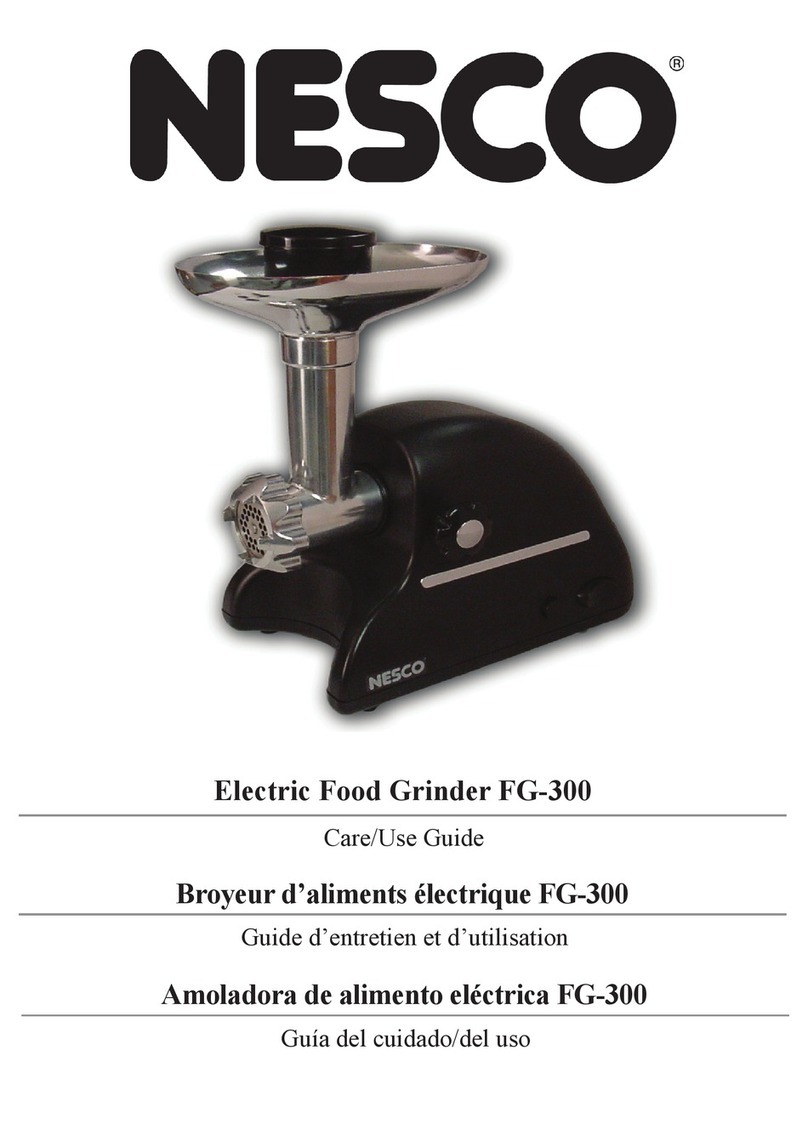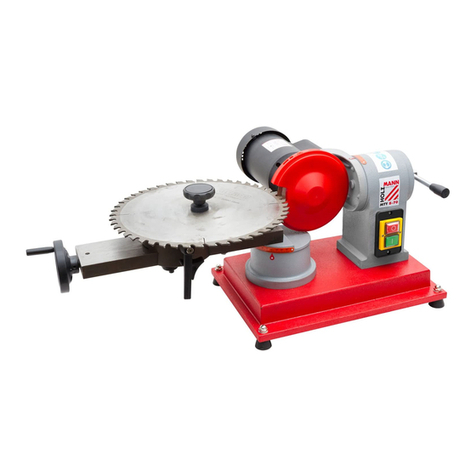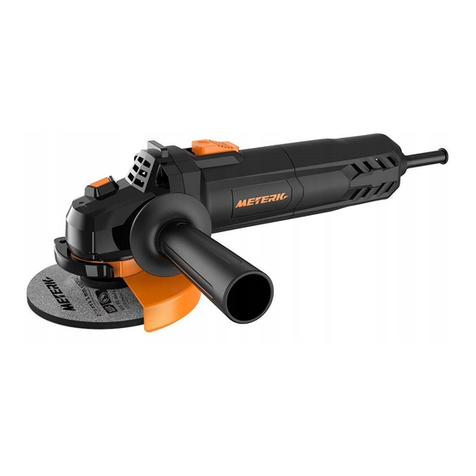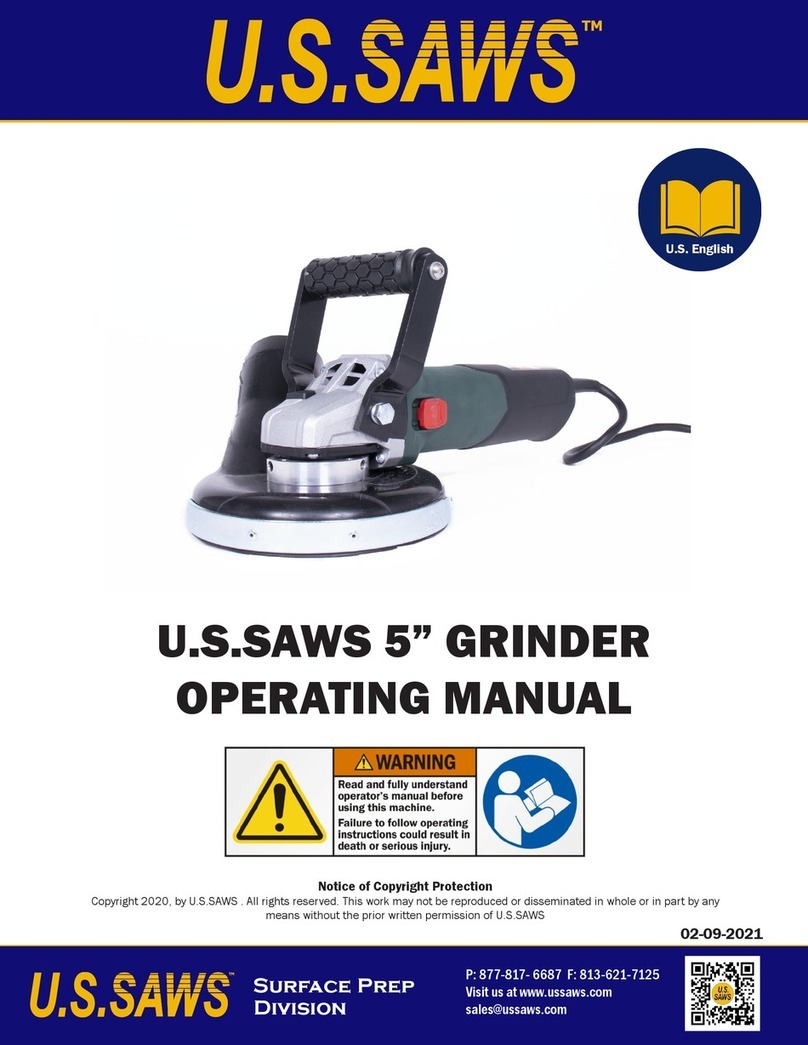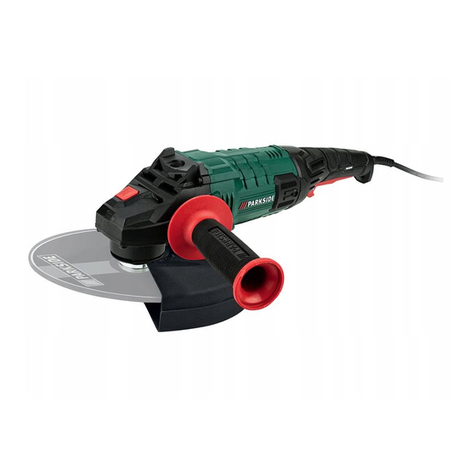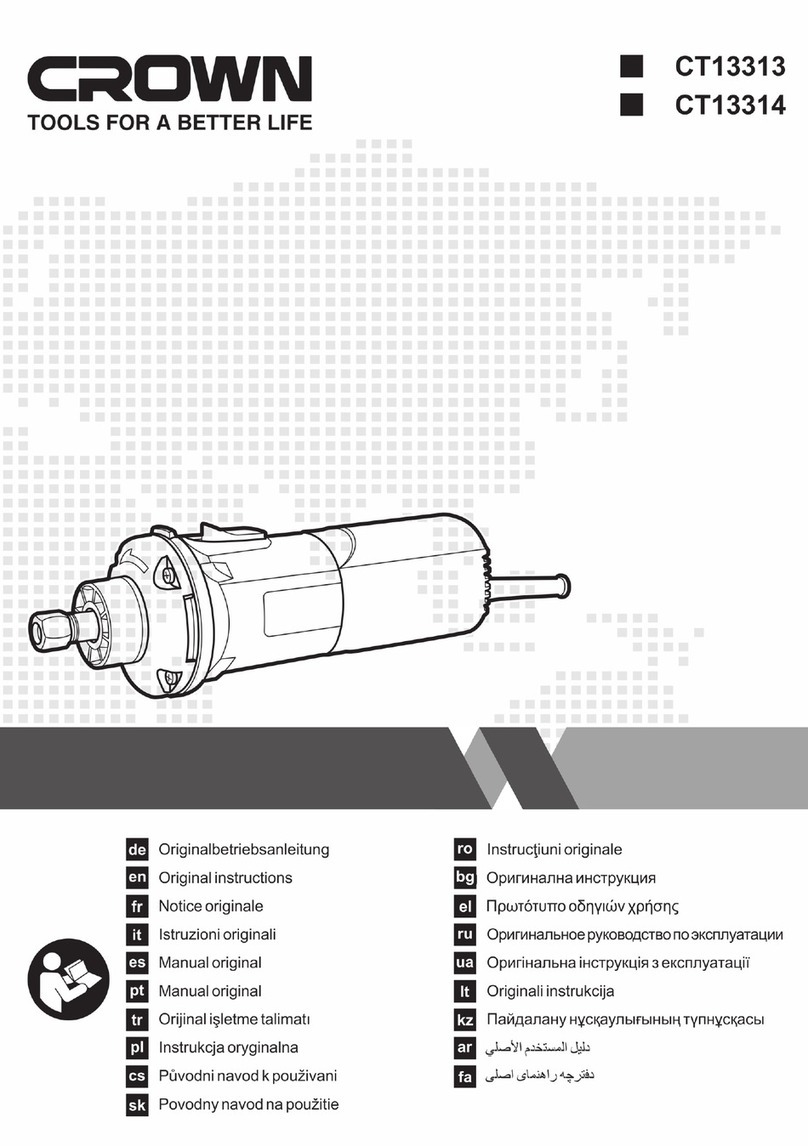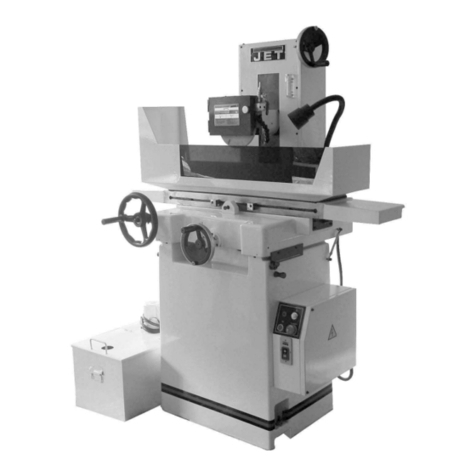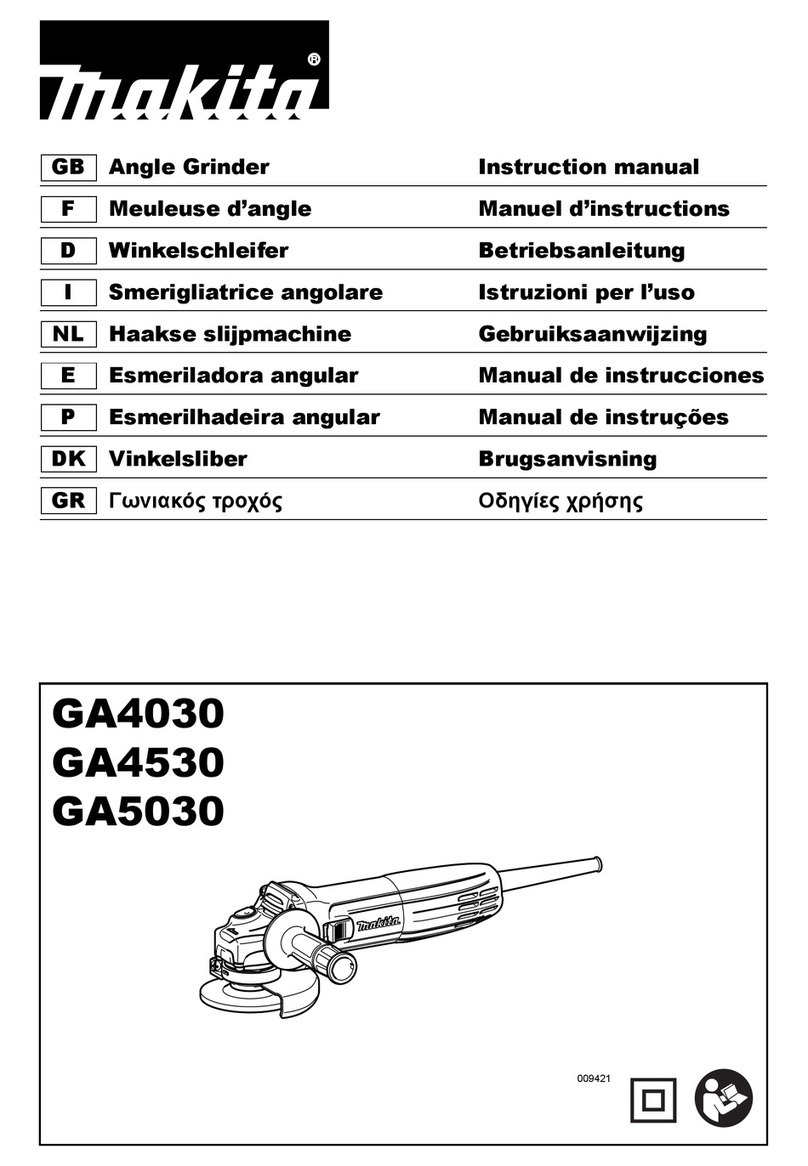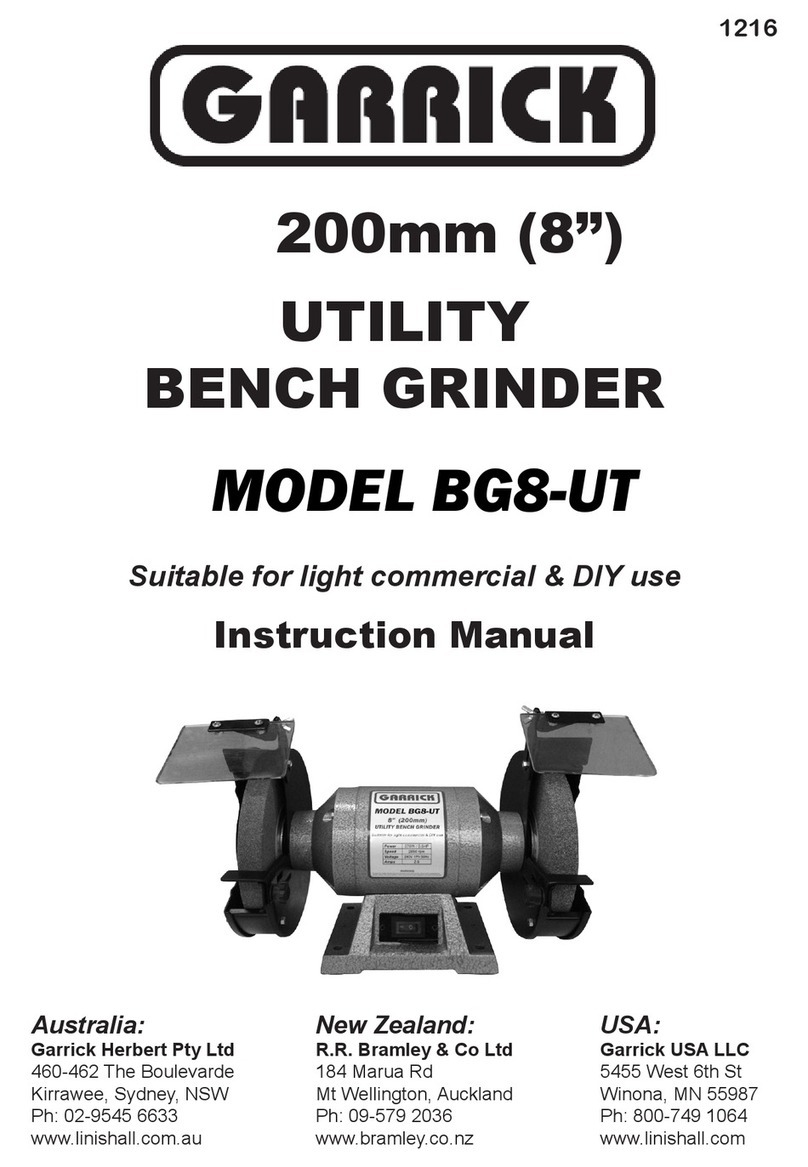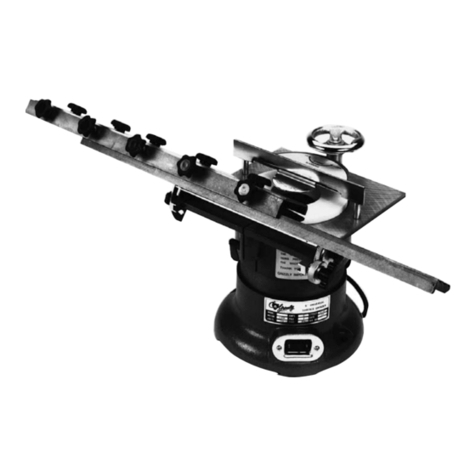English
4
t) Use clamps or another practical way to secure and
support the workpiece to a stable platform. Holding the
work by hand or against your body leaves it unstable and may
lead to loss of control.
u) Avoid bouncing the wheel or giving it rough treatment.
If this occurs, stop the tool and inspect the wheel for cracks or
flaws.
v) Always handle and store wheels in a careful manner.
w) Do not operate this tool for long periods of time. Vibration
caused by the operating action of this tool may cause
permanent injury to fingers, hands, and arms. Use gloves to
provide extra cushion, take frequent rest periods, and limit daily
time of use.
x) Air vents often cover moving parts and should be
avoided. Loose clothes, jewelry or long hair can be caught in
moving parts.
Kickback and Related Warnings
Kickback is a sudden reaction to a pinched or snagged rotating
wheel, backing pad, brush or any other accessory. Pinching or
snagging causes rapid stalling of the rotating accessory which
in turn causes the uncontrolled power tool to be forced in the
direction opposite of the accessory’s rotation at the point of the
binding.
For example, if an abrasive wheel is snagged or pinched by the
workpiece, the edge of the wheel that is entering into the pinch
point can dig into the surface of the material causing the wheel
to climb out or kick out. The wheel may either jump toward or
away from the operator, depending on direction of the wheel’s
movement at the point of pinching. Abrasive wheels may also
break under these conditions.
Kickback is the result of power tool misuse and/or incorrect
operating procedures or conditions and can be avoided by taking
proper precautions as given below:
j) Position the cord clear of the spinning accessory. If you
lose control, the cord may be cut or snagged and your hand or
arm may be pulled into the spinning accessory.
k) Never lay the power tool down until the accessory has
come to a complete stop. The spinning accessory may grab
the surface and pull the power tool out of your control.
l) Do not run the power tool while carrying it at your side.
Accidental contact with the spinning accessory could snag
your clothing, pulling the accessory into your body.
m) Regularly clean the power tool’s air vents. The motor’s
fan will draw the dust inside the housing and excessive
accumulation of powdered metal may cause electrical hazards.
n) Do not operate the power tool near flammable materials.
Sparks could ignite these materials.
o) Do not use accessories that require liquid coolants.
Using water or other liquid coolants may result in electrocution
p) Do not use Type 11 (flaring cup) wheels on this tool. Using
inappropriate accessories can result in injury.
q) Always use side handle. Tighten the handle securely. The
side handle should always be used to maintain control of the
tool at all times.
r) When starting the tool with a new or replacement wheel,
or a new or replacement wire brush installed, hold the
tool in a well protected area and let it run for one minute.
If the wheel has an undetected crack or flaw, it should burst in
less than one minute. If the wire brush has loose wires, they will
be detected. Never start the tool with a person in line with the
wheel. This includes the operator.
s) Use of accessories not specified in this manual is not
recommended and may be hazardous. Use of power
boosters that would cause the tool to be driven at speeds
greater than its rated speed constitutes misuse.

